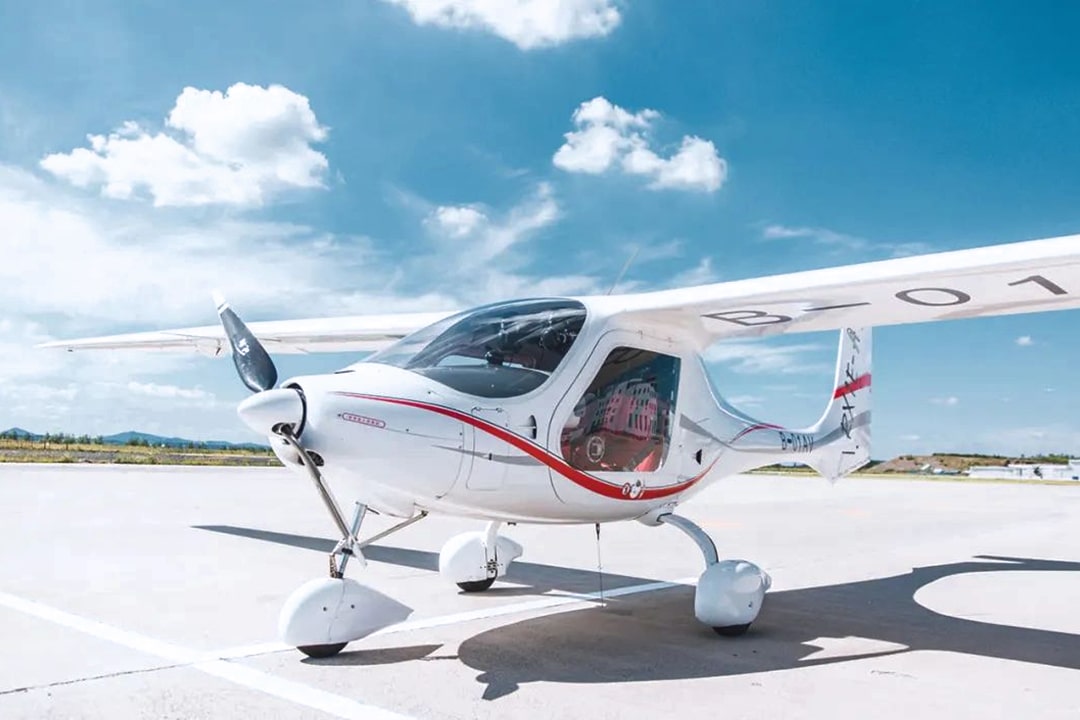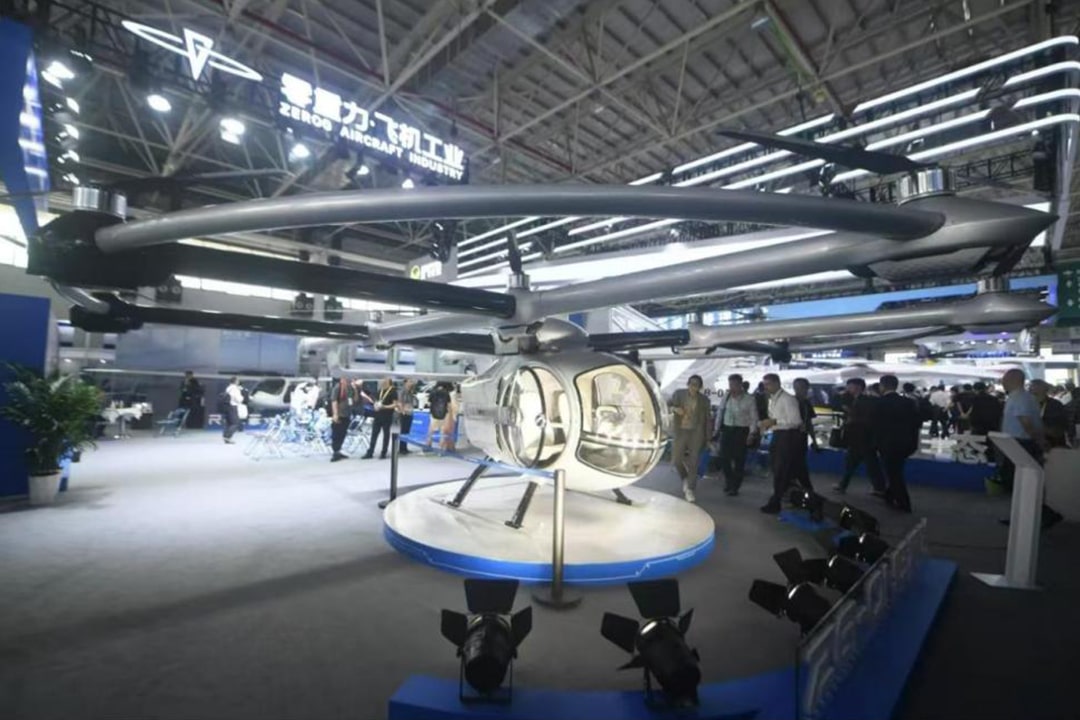Before cars got smart, we were already dreaming about flying above the gridlocked streets below.
In Blade Runner (1982), police cruisers known as “Spinners” lifted off without a drop of conventional fuel, gliding between skyscrapers in a seamless blend of road and air travel. Their designer, Syd Mead—who cut his teeth at Ford before shaping Hollywood’s most iconic futures—captured something deeply human: the urge to take flight.
That instinct, the one sparked by stargazing or childhood drawings of sky cars, has since given rise to the real-world pursuit of urban air mobility. Today, aerospace engineers, automotive veterans, artificial intelligence developers, and hobbyist pilots are converging on one question: How do we make flying as ordinary as driving?
The startup world, much like science fiction, offers no rulebook—just ambition. And Shi Hong has made a career out of going off-script.
A licensed pilot with nearly 500 hours of airtime across China and abroad, Shi already owned his own plane. But until 2021, he hadn’t found a business that truly fit. That changed in February 2021, when China’s government unveiled a national transportation blueprint that, for the first time, elevated the concept of a “low-altitude economy” as a key pillar—alongside platform and hub economies.
Shi had been tracking developments in electric aircraft. Now, he saw a shift on the horizon: the start of what could become aviation’s third major energy transition.
Meanwhile, Li Yiheng—a Nanjing University of Aeronautics and Astronautics grad with direct experience in aircraft development and certification—was laying the groundwork for the same future. In March 2021, he and a team of aerospace professionals launched ZeroG Aircraft Industry, a startup focused on building new energy aircraft.
The vision was clear. The tech was maturing. What they needed next was balance.
Introduced through mutual contacts, Li and Shi hit it off. Li, then just 25, took the reins as CEO, heading up technology and product development. Shi, in his early 30s, stepped in as COO to lead commercial operations and strategy. Two aviation enthusiasts, bound by timing and vision, became partners in a company aiming to turn flight into something routine.
Building the fleet, step by step
Li and Shi share the belief that clean energy and advances in aviation technology will make low-altitude air travel part of everyday life.
In ZeroG’s first year, Shi worked with the founding team to craft what they called a “three-tier model”: one aircraft in production, one undergoing airworthiness certification, and a third still in early R&D. At the time, ZeroG was the only company in China developing three distinct aircraft configurations in parallel.
The company’s first model, the RX1E-A “Ruixiang,” is a lightweight electric fixed-wing aircraft—essentially, the compact car of general aviation. Designed for pilot training, leisure flights, demos, and patrols, Ruixiang is an eCTOL (electric conventional takeoff and landing) vehicle, a more mature technology than the still-developing eVTOL (electric vertical takeoff and landing) class.
In May 2023, Ruixiang made its first delivery at Bailong Airport in Hefei. On March 31, 2024, the company completed its first batch delivery, entering the mass production phase.
Next in line is the ZG-ONE “Quefei,” a multi-rotor eVTOL aircraft built for short-range transport and sightseeing. While technically simpler than tiltrotor models, multi-rotors are quicker to commercialize—making Quefei a priority. The Civil Aviation Administration of China has accepted its type certificate (TC) application, with certification expected in early 2026.
Finally, there’s the ZG-T6: a six-seat tiltrotor designed as an “air taxi” for urban and intercity travel. It’s ZeroG’s most ambitious model, with market entry projected around 2028.
Each aircraft is part of a deliberate sequence—designed to generate early revenue, build experience, and funnel resources into the next stage.
As COO, Shi plays the role of pragmatic steward. He forecasts operational risks, manages timelines, and acts as an internal test pilot, providing real-world feedback to the R&D team.
Sometimes, that means pushing back.
During Ruixiang’s development, engineers proposed sleek, futuristic designs with upscale interiors. Shi shut that down.
“Users at this stage want safety and affordability,” he told the team. “Extra features just add cost and complexity.”
Stripping down the plane made certification easier, reduced maintenance, and kept price points within reach. The market seemed to agree—ZeroG secured 22 confirmed orders for Ruixiang at launch.

Timing the climb
In 2024, China formally identified the low-altitude economy as a new pillar of national growth, triggering a surge of investor interest. Capital quickly flowed into the sector, and early bets on drones and eVTOL aircraft began turning into visible wins.
By the end of the year, the Central Air Traffic Management Committee designated six cities—Hefei, Hangzhou, Shenzhen, Suzhou, Chengdu, and Chongqing—as pilot zones for eVTOL testing. What began as a national initiative quickly evolved into a localized race, with each city accelerating its own rollout plans.
To support meaningful adoption, three foundational elements still need to align: open airspace, physical infrastructure, and a pipeline of trained talent. Hefei’s strengths in electric vehicles, advanced manufacturing, materials science, and digital technologies—combined with strong policy backing—helped ZeroG move swiftly. In 2024, it secured two funding rounds from state-backed investors in Hefei, each exceeding RMB 100 million (USD 14 million).
Still, compared to other players that have raised much larger rounds, ZeroG kept a low profile. That restraint is intentional.
A ZeroG executive told 36Kr that while chasing a high valuation was an option, the company opted for a more grounded strategy. Rather than burn through capital, it committed to a three-tier model: bring one product to market quickly, generate revenue, and reinvest in the next.
The sector may be heating up, but it’s also frothy. Valuations are being driven more by anticipation than by tangible results. In industries like autonomous driving and electric vehicles—where development cycles stretch over years—what matters most is a stable market, proven technology, and a robust ecosystem.
ZeroG’s first-generation model, the Ruixiang, has now reached full commercialization. By March 2024, the aircraft had secured over 1,000 intent orders, including 60 confirmed purchases, mostly from general aviation operators.
Although China’s base of licensed pilots remains relatively small, analysts foresee a significant uptick in flight training over the coming decades. That could position Ruixiang well: its operating costs are roughly one-fifth, and its total ownership costs about half, those of conventional fuel-powered aircraft.
The Quefei, ZeroG’s eVTOL model, has also drawn strong interest, with over 1,000 intent orders. Once it enters the market in 2026, the team expects it to surpass Ruixiang in revenue.

According to Shi, profits from both aircraft will be funneled into the ZG-T6—the company’s most technically ambitious and potentially highest-reward platform.
ZeroG is forecasting 2028 as the industry’s first major inflection point. Meanwhile, the year ahead will likely be dominated by certification milestones and expanded product roadmaps, with most manufacturers targeting commercialization within a three-to-five-year window.
Flying, one mile at a time
In 2004, autonomous driving sparked imaginations. Two decades later, mass adoption remains elusive.
In 2024, electric aviation may be entering a similar cycle. It could take another decade—or longer—before air taxis become mainstream.
Three key hurdles remain:
- Infrastructure: Suitable runways and landing sites remain limited, while key elements of airspace management—communications, navigation, and dispatch—are still under development.
- Consumer mindset: There’s little historical precedent for using aircraft in daily life, and current cost structures keep the technology out of reach for most consumers.
- Regulatory framework: A well-defined legal and regulatory environment is critical for enabling the safe and scalable rollout of commercial operations.
Until those pieces fall into place, companies like ZeroG will have to stay patient. Execution counts, but so does timing.
If this is a marathon, then the players are barely past mile one. “Once type certifications start coming through and policy barriers ease, it won’t be about who tells the best story. It’ll be about whose product delivers real value.”
Self-reliance is often held up as a goal, but China still trails in key components like engines and flight control chips. Closing that gap is essential to compete globally with firms such as Joby and Archer.
In this international race, Chinese companies must play more than one role: technology pioneers, use case developers, and ecosystem architects. For ZeroG, that means advancing tiltrotor aircraft, proving out applications in tourism and training, and contributing to the standards that will shape the industry.
The “Gartner Hype Cycle” reminds us that every new technology passes through phases—emergence, hype, disillusionment, recovery, and finally, maturity. In electric aviation, both Chinese and global players are still at the starting line.
ZeroG’s leadership sees this as an inflection point. Electric aircraft could loosen the grip that Western companies have long held over China’s general aviation sector. As the industry matures, China could emerge not just as a buyer—but as a builder and exporter of aircraft, operating models, and aviation talent to Southeast Asia, the Middle East, and Africa.
The dream of flight has always inspired boldness. So has building a company from scratch.
Shi and Li, both born in the 1990s, have turned their shared passion for aviation into something larger: a mission. They’re leading a team of young engineers and dreamers not just to manufacture aircraft, but to shape the future of how we move.
And one day—when urban skies evolve into smart, three-dimensional transit corridors—the whir of ZeroG’s Quefei might be heard overhead. A sign that China’s aerial ambitions have, quite literally, taken flight.
KrASIA Connection features translated and adapted content that was originally published by 36Kr. This article was written by Liu Jingqiong for 36Kr.
